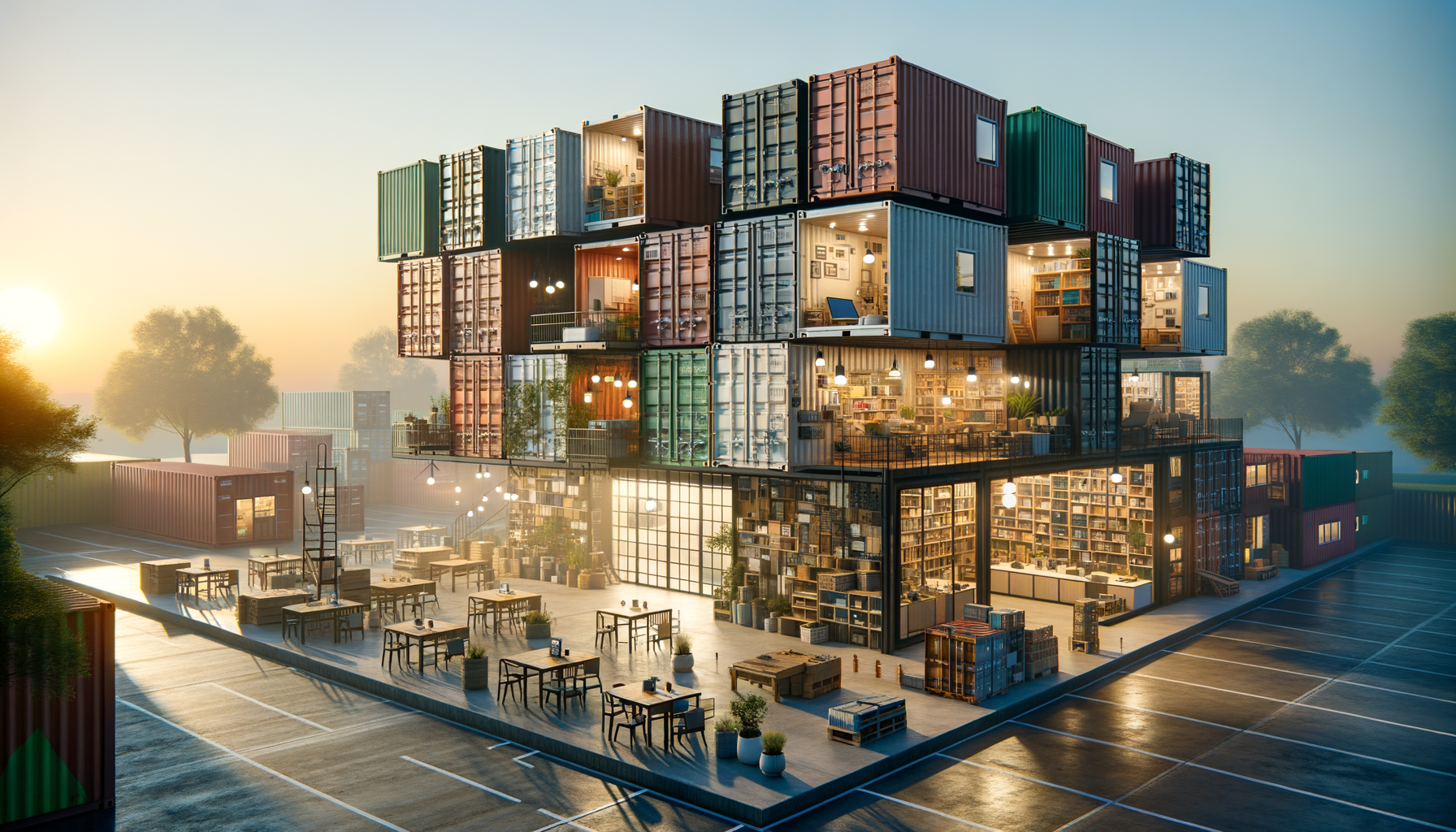
Transforming Unused Shipping Containers: Eco-Friendly Solutions for Storage and Construction
The Rise of Container Architecture
In recent years, the use of shipping containers in architecture has seen a significant rise. This trend is driven by the need for sustainable building practices and the desire to reduce waste. Shipping containers, once used solely for transporting goods across the globe, are being repurposed into homes, offices, and even retail spaces. This innovative approach not only addresses the issue of surplus containers but also offers a cost-effective and environmentally friendly alternative to traditional construction methods.
Shipping containers are made of durable steel, which makes them a robust choice for construction. They are designed to withstand harsh weather conditions at sea, which translates into excellent resilience on land. Additionally, their modular nature allows for easy stacking and customization, providing architects and builders with a versatile building block.
Some benefits of using shipping containers in construction include:
- Cost efficiency: Containers are relatively inexpensive compared to traditional building materials.
- Eco-friendliness: Repurposing containers reduces the demand for new materials and minimizes waste.
- Speed: Container-based structures can be assembled quickly, reducing construction time.
With these advantages, it’s no wonder that container architecture is gaining popularity worldwide.
Innovative Uses for Shipping Containers
Beyond traditional building applications, shipping containers are being utilized in a variety of creative ways. Their adaptability makes them suitable for numerous purposes, from temporary pop-up shops to permanent educational facilities.
One interesting application is the use of containers as mobile offices. These portable workspaces are ideal for businesses that require flexibility and mobility. Equipped with modern amenities, container offices can be transported to different locations as needed, providing a convenient solution for companies in industries such as construction and events management.
Another innovative use is in the realm of agriculture. Containers can be transformed into vertical farms, offering a controlled environment for growing crops. This approach maximizes space and resources, making it a sustainable option for urban farming. By utilizing containers, farmers can produce fresh produce year-round, regardless of external weather conditions.
These examples illustrate the versatility of shipping containers and their potential to revolutionize various sectors.
Environmental Impact and Sustainability
The environmental benefits of repurposing shipping containers are significant. By reusing these structures, we can mitigate the impact of steel production and reduce carbon emissions. Traditional construction methods often rely on new materials, which require energy-intensive manufacturing processes. In contrast, container-based construction repurposes existing materials, contributing to a circular economy.
Moreover, containers can be insulated and fitted with energy-efficient systems, further enhancing their sustainability. Solar panels, rainwater harvesting systems, and green roofs are just a few of the eco-friendly features that can be integrated into container structures. These additions not only reduce the environmental footprint but also lower operational costs in the long run.
Incorporating sustainable practices in construction is crucial for addressing climate change and promoting environmental stewardship. Shipping containers offer a viable solution for building greener, more sustainable structures.
Challenges and Considerations
While the benefits of using shipping containers are numerous, there are also challenges to consider. One of the primary concerns is ensuring structural integrity. Containers must be properly modified and reinforced to meet building codes and safety standards. This process requires skilled labor and expertise, which can increase costs.
Another consideration is the potential for condensation and insulation issues. Containers are made of metal, which can lead to temperature fluctuations and moisture buildup. Proper insulation and ventilation are essential to prevent these problems and ensure a comfortable living or working environment.
Lastly, zoning regulations and permits can pose challenges. Not all areas permit container-based structures, and obtaining the necessary approvals can be time-consuming. It’s important for developers and builders to research local regulations and work closely with authorities to ensure compliance.
Despite these challenges, the potential of shipping containers as a sustainable building solution remains strong. With careful planning and execution, they can be transformed into functional and environmentally friendly spaces.
Conclusion: Embracing Container Solutions
The transformation of shipping containers into innovative and sustainable structures represents a promising shift in construction practices. By embracing this approach, we can address the growing need for eco-friendly building solutions while reducing waste and resource consumption.
As more individuals and organizations recognize the potential of container architecture, we can expect to see continued growth and innovation in this field. Whether for residential, commercial, or agricultural purposes, shipping containers offer a versatile and sustainable option for modern construction needs.
For those considering container-based projects, it’s essential to weigh the benefits and challenges carefully. With the right planning and execution, shipping containers can be transformed into outstanding spaces that meet both functional and environmental goals.

